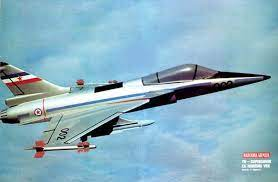A lot of operators field 'advanced' types which have digital avionics in them. Ours are classic 70s thing, retrofitted only with NATO communications gear and GPS receiver. The way they're used is that pilot gets directions from someone else via radio, then goes there to acquire the target visually. The maximum range of firing solution is about 8 km best case scenario, via the same missile that's used as defensive measure on choppers. The MiG itself is completely oblivious to the armament apart from carrying it and having necessary wiring in around the cockpit, the pilot manuevers to have the target in front of him, turns the missile on, the missile head actually locks on to the target itself, and starts buzzing a sound when lock on is achieved, which means it's ready to fire. As you might've guessed, this missile (R-60) is not carried by platforms whose primary role is air to air combat, it's a small 'portable' missile that can be mounted on a cropduster if you really wanted it. In case target did not go down, MiG can fallback to gun fight with radar assisted gun sight, provided that the radar can actually lock on to the target, which is not guaranteed considering what radar we're talking about and how it performs under jamming.
Vietnam era tech, Vietnam era approach. Imagine what quantum leap pilots will experience flying in Rafale.
Btw, SFR Yugoslavia tried to develop 4th generation fighter. Actually some of the same MiG-29s Serbia operates today, were ordered as an interim measure and as a loan pay back from Soviets, until Yugo-fighter gets deployed sometime in the mid to late 90s. The first prototype was 30% complete when the war struck. The technology used, was French, as the plane design resembled a single engine version of Rafale

So this historical fact connects a bit too.


